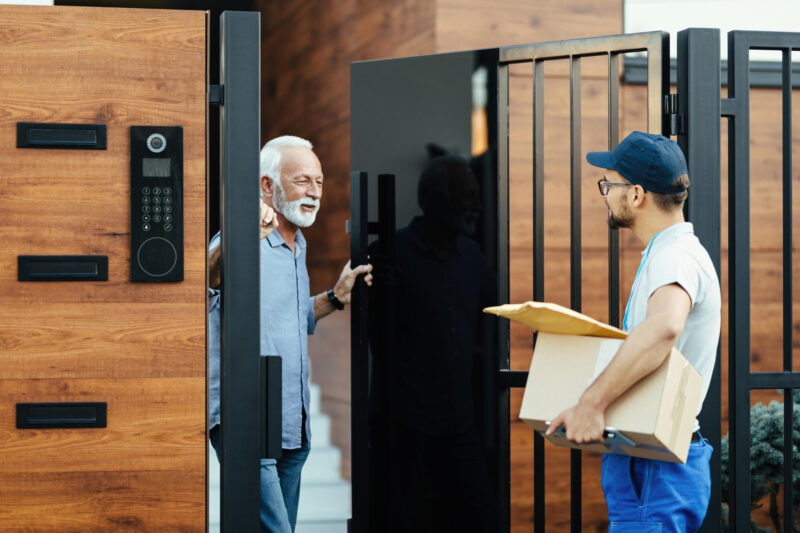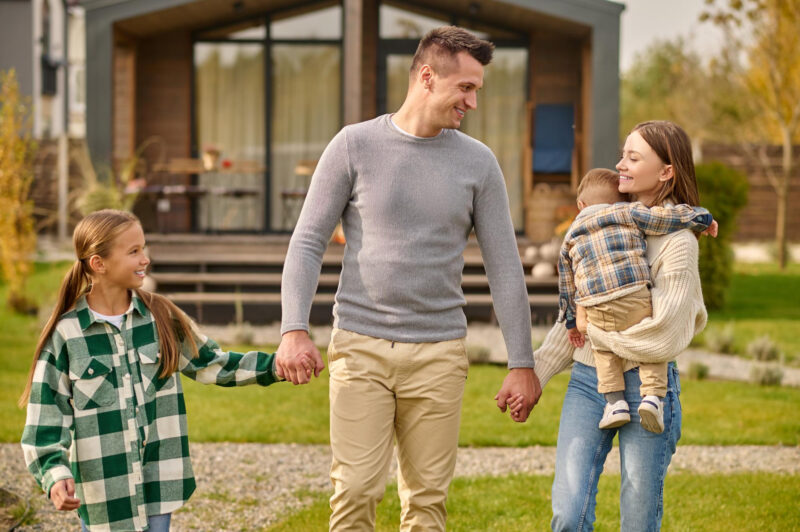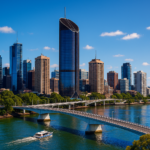Gated communities represent a safer approach to modern living with dedicated facilities and security for local residents. From sprawling communities across large parts of Florida and California, USA, to cul-de-sac-type communities growing in popularity in Queensland and Victoria, they create a new standard for local living.

Better and Safer Living Behind Gates

Note: While there is much discussion about the segregation of Australia’s cities, the reality is that people will move where they feel safer or safest. And the middle class is taking a growing interest in the gated community concept.
The key benefit is one of security, with gated access limiting who can enter the community, day and night. The gate is backed up by a strong perimeter, which is then backed up with security personnel and smart building technology.
All of which creates a safer atmosphere for families, a level of privacy for those concerned about intrusion into their lives, and the opportunity to build a closer-knit social community, with a strong homeowners association (HOA) for families who are there for the long term.
Traditionally, gated communities were the preserve of the rich elderly, diplomats, military and similar careers. But as society becomes more fractured, the business-leader classes, those concerned about their families and anyone who feels unsettled in the high-pressure urban living environment is a prospective buyers for a gated property.
Depending on the type of community, there may also be managed maintenance to make life easier for older or less able residents. While private amenities like swimming pools, gymnasiums, parks and recreation facilities promote health and wellbeing. They help improve the quality of life, make the site a good place for family and guests to visit, and deliver a powerful level of peace of mind when considering a property move.

The Power of Gated Community Security from a Sales Perspective
The American experience shows gated communities aren’t just for the rich, with higher appreciation rates for properties despite any membership or upkeep fees. For sellers, the key benefits of security, a good place to grow up with family, typically prime locations and ease of maintenance make them an easier property to sell to target buyers.
Another option for gated communities is short-term rental, either as a family, extended or multi-family holiday from-home destination. Or for businesses looking for gatherings and off-sites for remote workers with a difference, often flying them in from around the country or world for the experience.
Further sales opportunities come from niche features. Take golf-focused communities like Sandhurst, Melbourne. Around the world, there are fly-in communities with their own airstrip and those located with racetracks for horse or motorsports fans, all using large areas of open land to create a unique social gathering with the benefits of permanent residence that can typically follow a scene, season or circuit of events.
New gated communities can also be designed with green and environmental goals high on the agenda, from solar power to water recycling and the use of novel or natural materials to reduce the environmental impact. Electric car, bike and buggy charging points should be the norm, and local transport should be powered by locally-generated electric, hydrogen or other responsible sources.
Some basic advice for prospects can reassure them that they will still get their post and food or takeout meals delivered is always a good starting point for people who may have false assumptions about gated living.

Protecting Gated Communities
Designers and managers of gated communities have a strong level of experience to base their protection efforts on. The key is unobtrusive but smart and highly-responsive security to protect the area, residents and guests.

Note: Based on the Sandhurst example, gated communities can be up to eight times safer than the surrounding area through the use of on-site security teams and extensive use of CCTV (with a security bunker).
For perimeter security, residents will look for well-designed and attractive walls that avoid the security-zone feel. The use of organic materials and dense plants to build natural barriers will help maintain both privacy and security. And video security systems should be obvious where required, but subtle elsewhere, so it does not feel obtrusive to residents.
With large numbers of CCTV cameras, operators can use AI to constantly monitor all activity, alerting human security to any unusual or unexpected events. These can also link to fire, smoke, gas, leak and other sensors to speed response times and reduce any accidental or other damage.
Alongside these systems, visitor management systems play a vital role in controlling and recording guest access, ensuring residents know who is entering the community at any given time and reducing the risks of unauthorised entry.
Security also needs to be tested regularly to prove that it works and reassure residents. Well-drilled and trained staff demonstrating their skills provide greater reassurance, as long as residents are given some notice. Being aware of the HOA’s and residents’ sensibilities should also be high on their agenda.

The Future of Gated Communities
Australia’s gated communities will evolve along with the changing domestic property landscape. Notably, as foreign buyers take an interest and property rental/sales businesses see the advantages in meeting the demand from shifting demographics, pressures on urban living, and a societal change to notions of privacy and community.
Traditionally associated with exclusivity and security, gated communities are shifting that concept to one of lifestyle-focused enclaves that balance safety with sustainability, social unity and the latest in smart design and security, however ornate or organic the building design.
While the arguments will rumble on that gated communities risk fostering social fragmentation, reality is that most communities are already fragmented, and accelerated in their divergence. Developers can address the issue by designing mixed-use and shared spaces, permeable boundaries, using smart security and inclusive design so the wider community does not feel totally separated.

Note: Technology will play a pivotal role in this approach with smart access and automated systems to give people the access they need and no more. All while reflecting Australia’s growing emphasis on climate resilience and digital living.
Ultimately, gated communities in Australia will become a more widely accepted concept, adopted by more homebuyers and featuring higher on the radar of landowners, builders and sellers. By offering a guaranteed social connection, a greater sense of environmental stewardship, and moving to an adaptive design that can change over time to meet the changing demands of residents, there’s the opportunity to capture a privacy-concerned and future-looking domestic and international audience.














